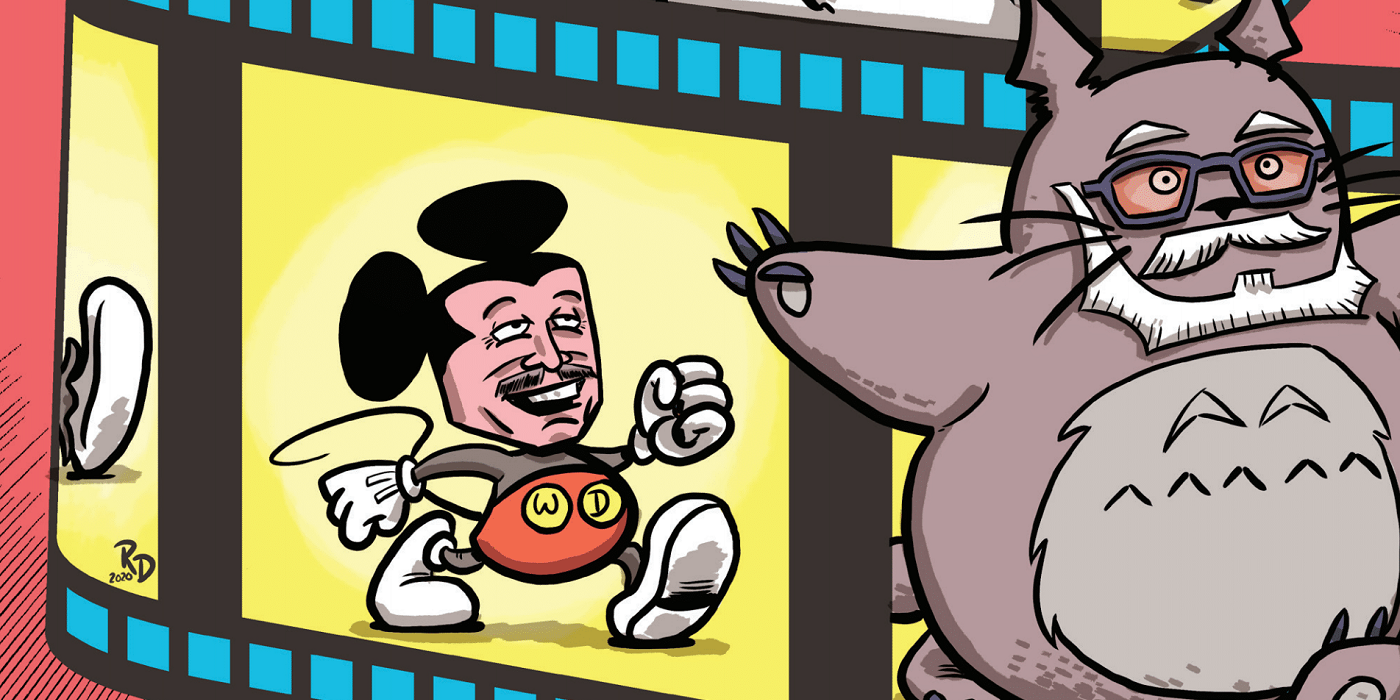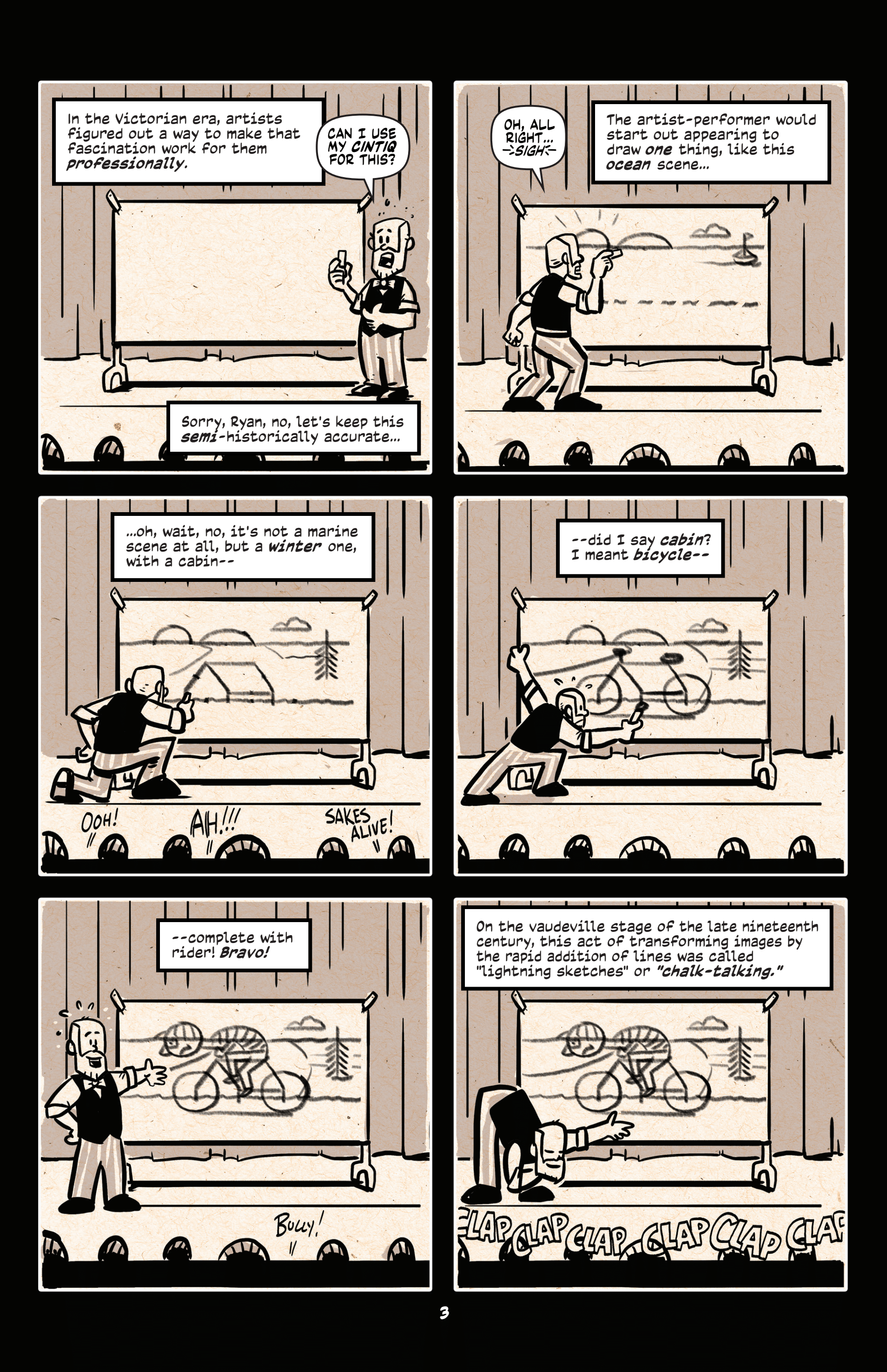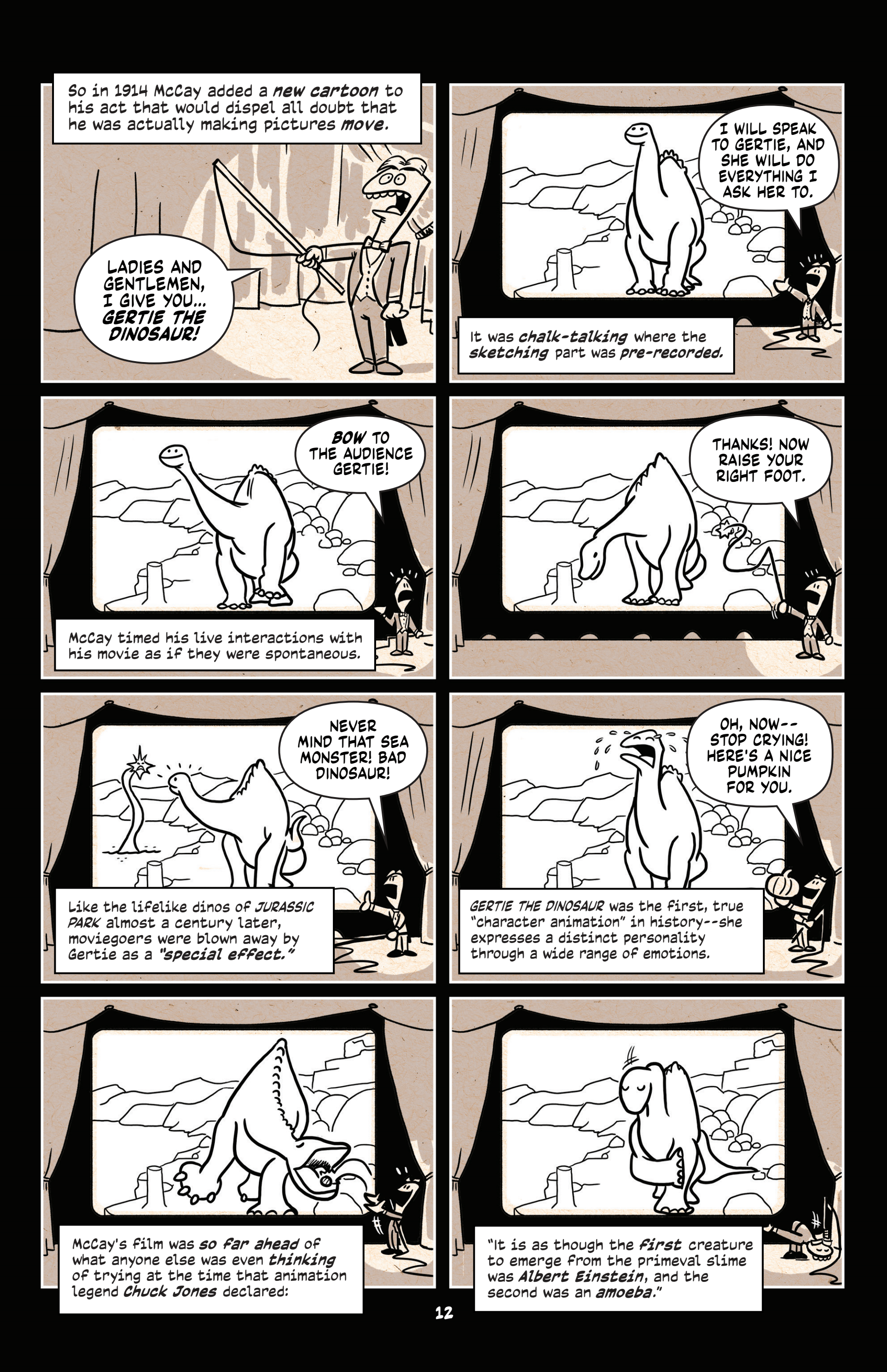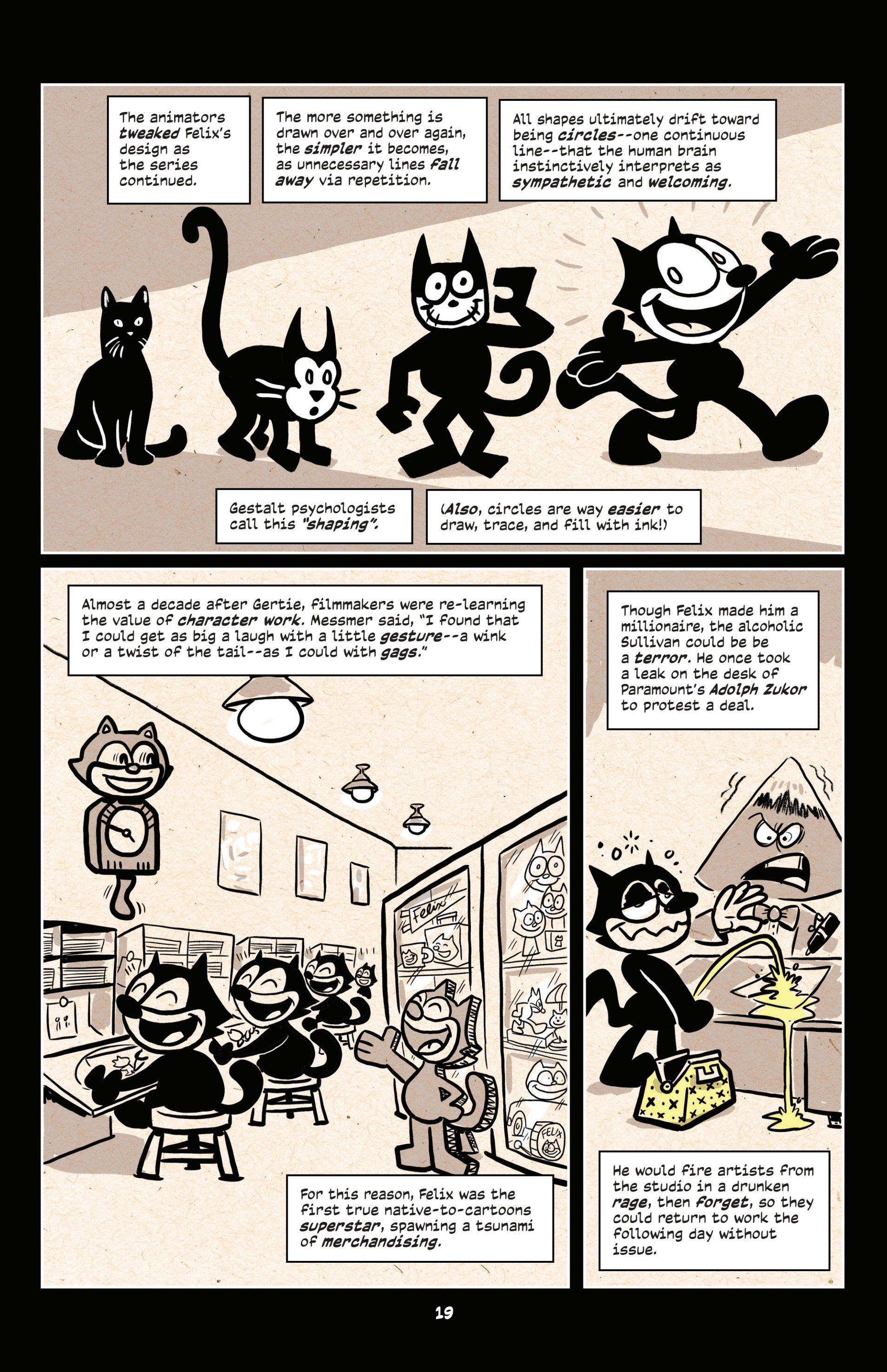In "Reason to Get Excited," I spotlight things from modern comics that I think are worth getting excited about. I mean stuff more specific than "this comic is good," ya know? More like a specific bit from a writer or artist that impressed me.
Happy Fred Van Lente Day, everyone! It is our annual celebration of the work of comic book writer, Fred Van Lente. This is actually our FIFTEENTH annual Fred Van Lente Day! Click here to see more FVL Day celebrations. So it only makes sense to celebrate the holiday by spotlighting the first issue of Fred Van Lente and Ryan Dunlavey's brand-new Comic Book History Animation, whose first issue is due out this Wednesday!
As you likely know by now, Fred and Ryan have a long history of doing excellent historical comic book works, going back to 2005's Action Philosophers (which I'll be posting a chat with the two of them later tonight before Fred Van Lente Day comes to a close) and more recently including Action Presidents and Comic Book History of Comics (plus Action Activists!). They set a difficult task for themselves with the Comic Book History of Animation, since a good deal of the history of animation involves some technical aspects that were not as present in their earliest history of comics. So they have to explain some more things here than they did while talking about comics.
However, at the same time, there is something to be said for animation having a much more straightforward historical progression than comics. With comics, you could go as far back as hieroglyphics or cave drawings to have sort of examples of comic books, forcing the consolidation of that history to be a lot more difficult. With animation, there are definitely some difficult decisions to be made on WHEN you start the history, but it is certainly clearer than it would be with comics.
Here is a perfect example of what I was noting where Van Lente and Dunlavey have to both introduce a concept, depict the concept and then put that concept into historical perspective, all in a single page. You see, before we got to the traditional types of animated films that we think of today as "early animation," there were things like lightning sketches, where artists would "simply" be drawing on a large piece of paper a drawing, but drawing it so quickly that it gave off the impression as though things were moving...
See what I mean? They have to both explain the concept, depict the concept and then put the concept into context in the greater history of animation. Lighting sketches, of course, would be used as the basis for the earliest version of the sort of animation that we think of in terms of early animation. Thomas Edison also comes into play with some of the early versions of making these drawings turn into true animation.
Here is an example of one of those earliest cartoons, Winsor McCay's Bertie the Dinosaur...
Of course, it does not serve to just explain to the reader different types of animation, but you have to see the PEOPLE involved in the history of the medium, and Van Lente and Dunlavey do a great job developing the personalities of the figures involved in a condensed narrative that does not allow for a lot of room FOR characters to be developed. So it has to happen FAST and one of the things that Dunlavey does to make the characters A. more relatable and B. more discernable is that he has the characters appear as the cartoons that they created, so that, for instance, McCay is depicted as a dinosaur. Stuff like that.
As animation begins to pick up steam, naturally, the stars of the films, the cartoon characters themselves, become famous, as well, and Van Lente and Dunlavey do a fine job spotlighting the most notable fictional figures in the world of animation, with special attention being paid early on to Felix the Cat, a cartoon feline who was probably the first superstar of the animated age...
Another tricky aspect of dealing with the people behind the scenes is that this often leads to the stories about business, and that's always a difficult thing to parse down, because, as the adage goes, there are three stories - your version of events, my version of events and the truth of what happened and typically none of the three are too close to each other. Because of that, Van Lente has to sort out the various positions on the interactions of the early days of animation and figure out who is closest to telling the truth and sticking with that. It can be very difficult at times to figure out what the "real" story, but Van Lente does a great job parsing it all down to size.
Perhaps the most difficult figure to fit into the narrative in an easy sense is Walt Disney, who really take a hold of the whole comic book as soon as he comes on to the scene. As Walt Whitman said about people, "I am large, I contain multitudes." That goes for Disney, to be sure. He is a large figure in the history of animation, but he also contained multitudes. He is hard to pin down one way or the other. Is he a villain or a hero? I think Van Lente and Dunlavey give a good picture of him overall, where he doesn't come off TOO well, but in an industry like this, it just makes sense that the most successful figures would also form the most enemies....
The end bit of the issue is a brilliant twist where the comic books in the series will follow the history of cartoons also in the sense that the story begins in black and white and will soon transition to color, and as Disney heads off to California for the next step in his career, we see him enter a world of color for the first time. Very clever stuff.
You can pick up the first issue of Comic Book History of Animation this Wednesday and I recommend that you do so!





